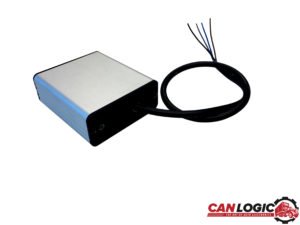 Why do many truckers and companies with fleets go in favor of using an AdBlue emulator (sometimes illegally even)? This answer can be answered with just two words – costs and time.
Why do many truckers and companies with fleets go in favor of using an AdBlue emulator (sometimes illegally even)? This answer can be answered with just two words – costs and time.
1. SCR system replacement expenditure
It is widely known that SCR systems for trucks are not cheap.
And when we mean not cheap, we mean incredibly expensive. You would need to spend up to a few thousand pounds on an SCR system replacement if you do not have warranty coverage. This is exactly why many use AdBlue emulators as often as possible, when possible.
How expensive is an SCR system repair?
The average expenses for a NOx sensor replacement can cost up to €750. A single injector can run for up to €1000. A pump change can run you up to €2500. A control unit is even more expensive – €1500 on average.
Overall, the cost for a full replacement is sky-high – around €6000 or more. It is also assumed that you would not have any issues with the AdBlue tank, filter, pressure/temperature sensors etc. Furthermore, by replacing one component there is also no guarantee that another will serve you well for long enough to cover the costs. Lastly, you would need to include the cost of servicing and the loss of profits due to the vehicle being non-operational.
2. Saving time on transits
There are some transits that you simply cannot afford to fail. AdBlue emulators can serve as great emergency tools in a dire situation. Connecting an AdBlue emulator to drive to a nearby service or to finish a job before calling emergency servicing would be ideal if thousands of euros and your reputation depend on it.
An AdBlue emulator will imitate the SCR system regardless if it is in need of repair or not. All there is to do is to disable the SCR and NOx systems and connect our emulator to the vehicle. With that in mind, you can use the emulator in various ways to extend the life of your SCR system and save both money and time in the end.
Contact CanLogic now for more information on AdBlue emulators for your vehicle.

 The SCR system proves to be quite a hassle for Euro-standard trucks outside of Europe – the costs of AdBlue and the significant repair costs of the SCR system make the use of AdBlue emulators a no-brainer. However, what other options are there?
The SCR system proves to be quite a hassle for Euro-standard trucks outside of Europe – the costs of AdBlue and the significant repair costs of the SCR system make the use of AdBlue emulators a no-brainer. However, what other options are there?